Every year, the Met Gala sets the fashion world abuzz with its extravagant themes and interesting outfits. But this year, there’s a theme that speaks to something deeper, something that is far more than just high fashion.
The Met Gala spotlighted Black Dandyism, which isn’t just about looking sharp in a well-tailored suit. It’s about reclaiming space, asserting identity, and making a bold statement that speaks far beyond aesthetics.
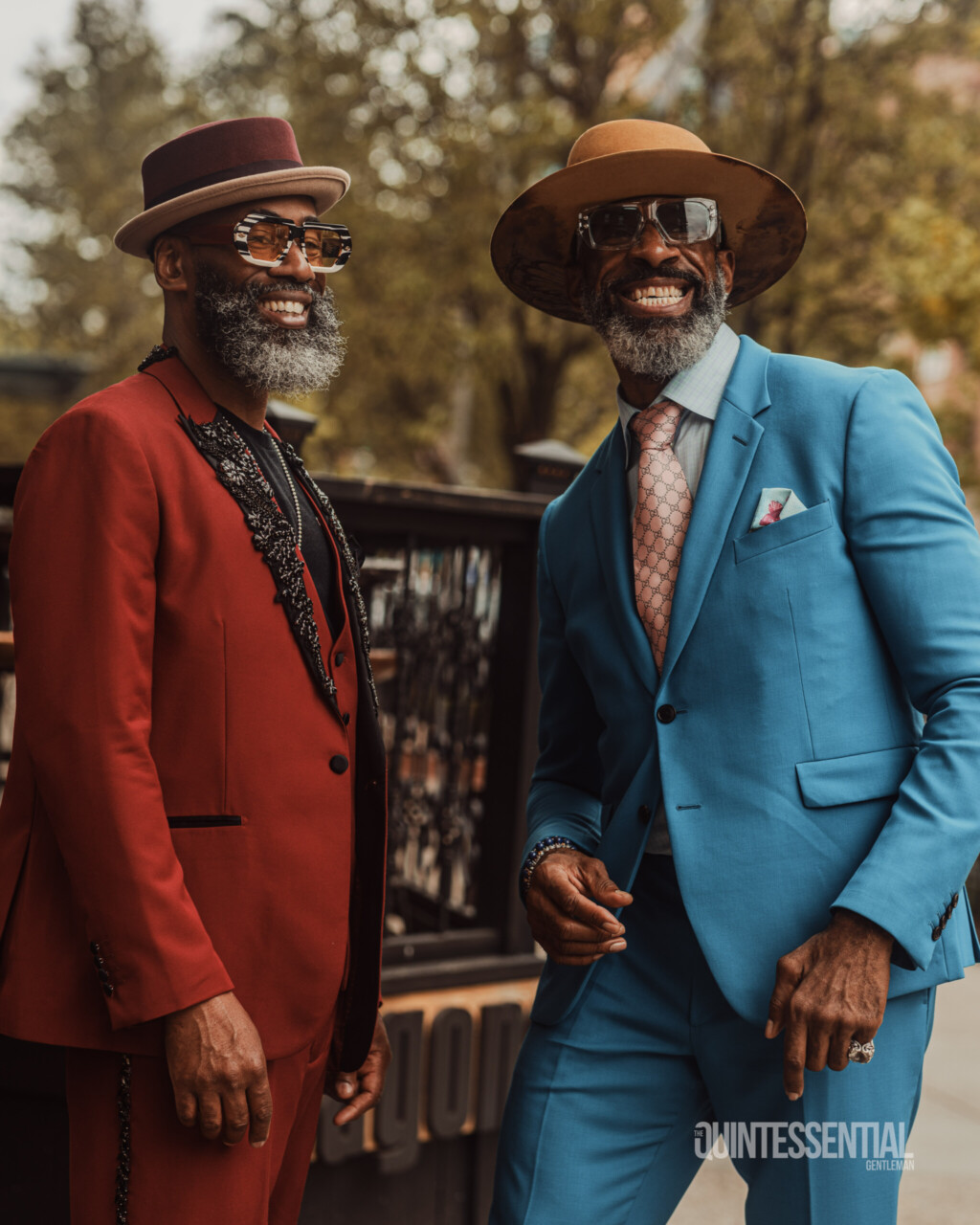
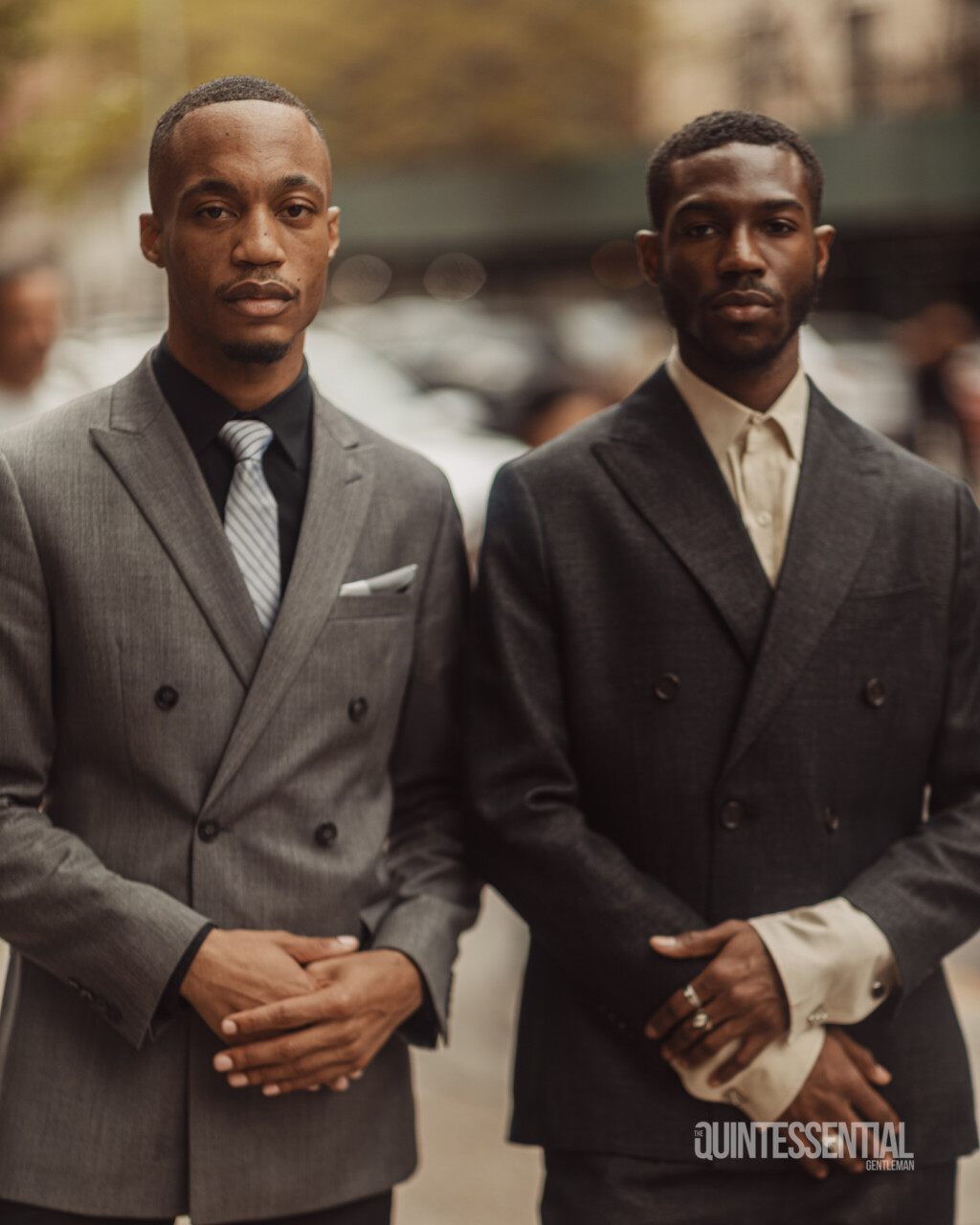
At its core, Black Dandyism is about telling the world: You will see me. You will respect me. You will recognize my humanity.
As part of The Quintessential Gentleman’s May cover story, we had the privilege of witnessing Black Dandyism come to life in one of the most iconic neighborhoods in the world—Harlem.
On April 26, a group of Black men came together to celebrate this rich tradition, wearing their finest suits and embodying the spirit of Black Dandyism, a tradition that’s not only about fashion but about redefining how the world sees us.
The cultural assembly, led by international celebrity photographer J. Monroe, was far more than just a magazine cover shoot—it was a powerful reimagining of Gordon Parks’ legendary 1963 photograph, “Black Muslims in America,” and a bold statement about Black men’s presence and purpose.
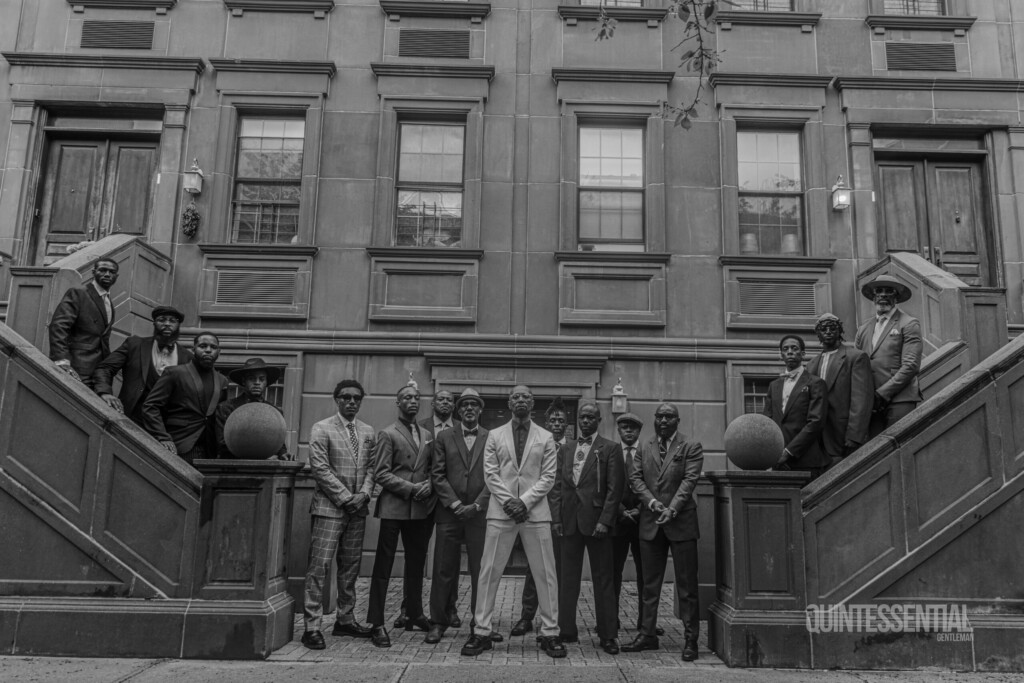
It was a day to honor a legacy of Black excellence and show the world that we are here, proud, unapologetic, and full of style.
A Harlem Celebration of Black Dandyism
The cultural assembly began on a cloudy Saturday, as a group of Black men gathered at the Aloft Hotel in Harlem. The air buzzed with anticipation as camera crews moved constantly, capturing every moment while we awaited the arrival of each participant for the official photo.
Though the sky hinted at rain, there was an undeniable excitement among us, as everyone hoped the weather would hold so we could proceed with the shoot outside.
Each gentleman arrived dressed in meticulously tailored suits. Every piece of clothing was not merely an outfit, but a declaration of individuality, cultural pride, and identity. This wasn’t just about looking good, it was about being seen, heard, and respected.

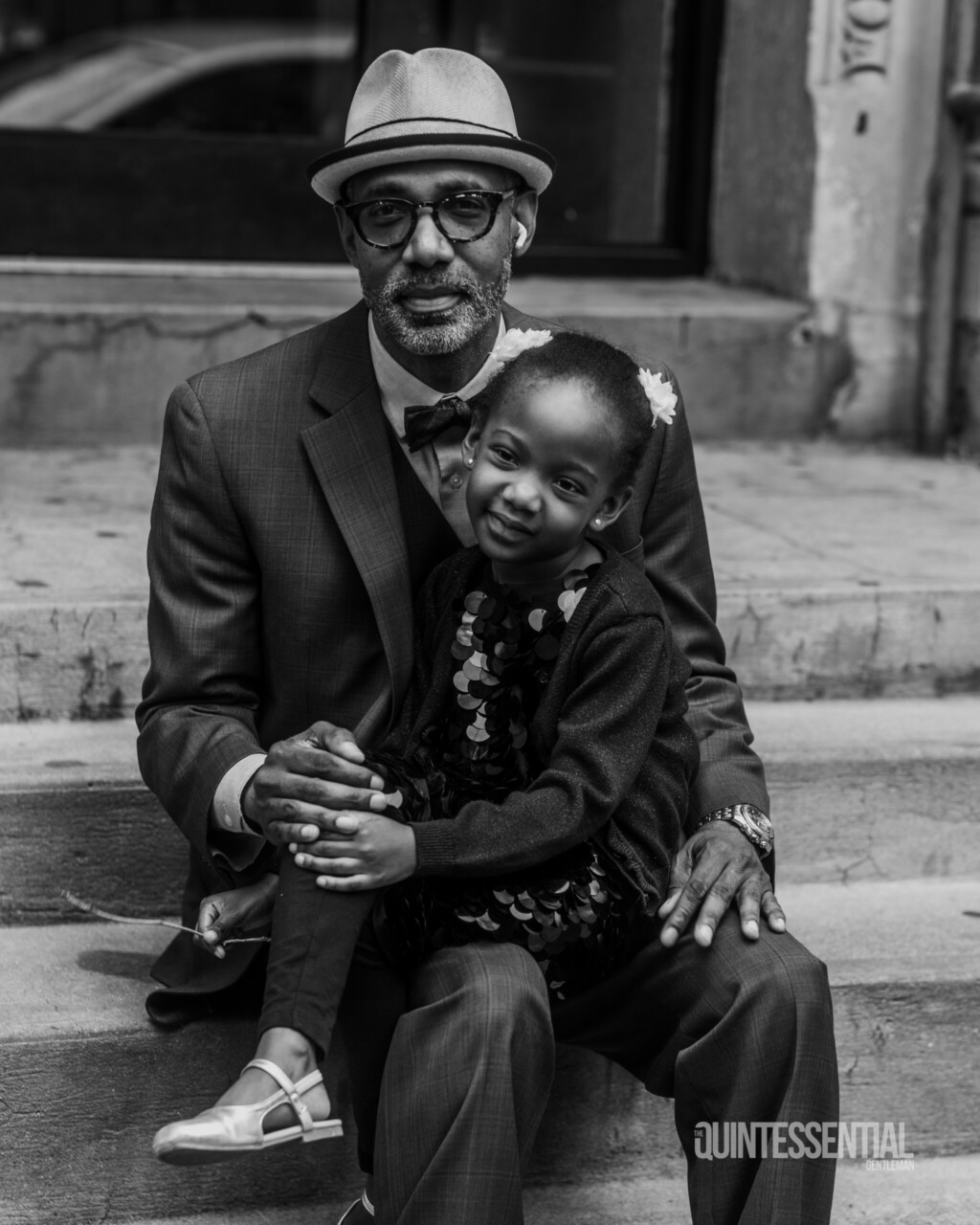
Before stepping outside for the official shot, the atmosphere was one of brotherhood and shared purpose. It wasn’t just a collection of gentlemen in sharp suits; it was a movement.
A group standing together, transcending fashion, culture, and identity, sending a message to the world: Black men will define their own narrative.
You Will See Me
When you think of Harlem, you think of a neighborhood that has always been at the forefront of culture, identity, and style.
It’s where jazz legends played their first notes, where poets wrote some of the most powerful verses of the 20th century, and where a Black man created a media platform solely focused on telling the stories of Black men to disrupt the negative stereotypes that the media has continued to perpetuate.
The Quintessential Gentleman was created in Harlem, at 135th and St. Nicholas, in my aunt’s apartment. Harlem is not just a place—it is a living, breathing embodiment of Black culture and creativity, where style is a way to declare pride, dignity, and self-respect.
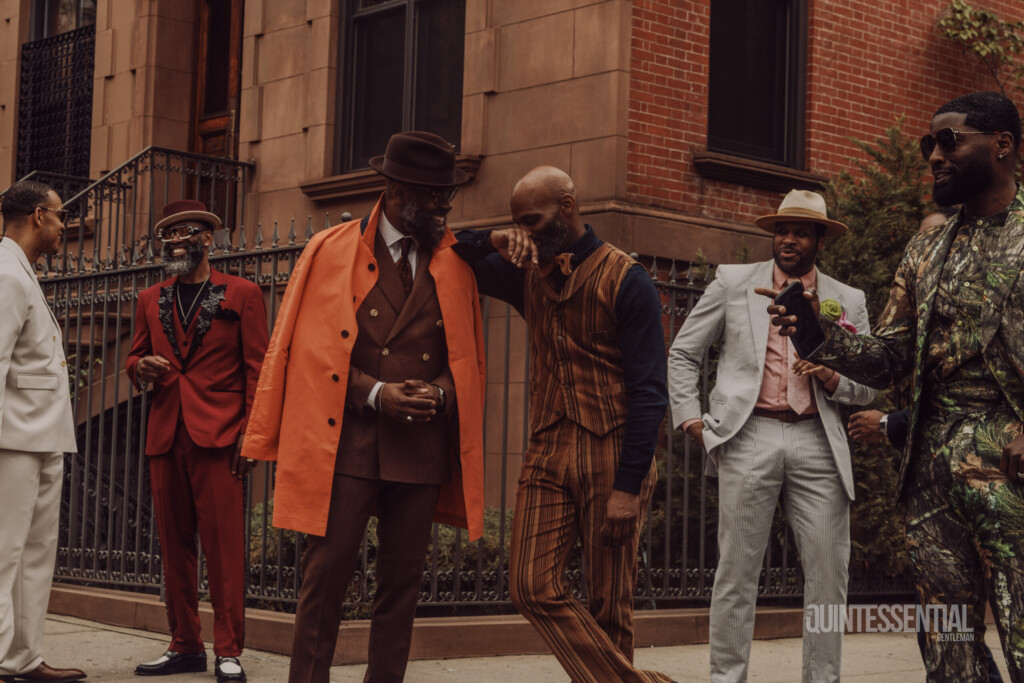
It is where we stand tall and say, “I am here, I matter, and I will not be overlooked.”
Black Dandyism, at its core, is about reimagining what it means to be a Black man in this world. It’s about standing tall in a tailored suit, confidently showing up in spaces where you might not always feel welcomed, and demanding recognition.
This is a tradition rooted in centuries of resilience and self-definition, and it continues to play a vital role in how Black men express themselves today.
“We wanted to make sure we highlight the everyday Black man,” said J. Monroe, reflecting on the cultural assembly that would become the cover for The Quintessential Gentleman. “This is about showing up for ourselves, dressing for ourselves. Not for anyone else. We’re telling our own story.”
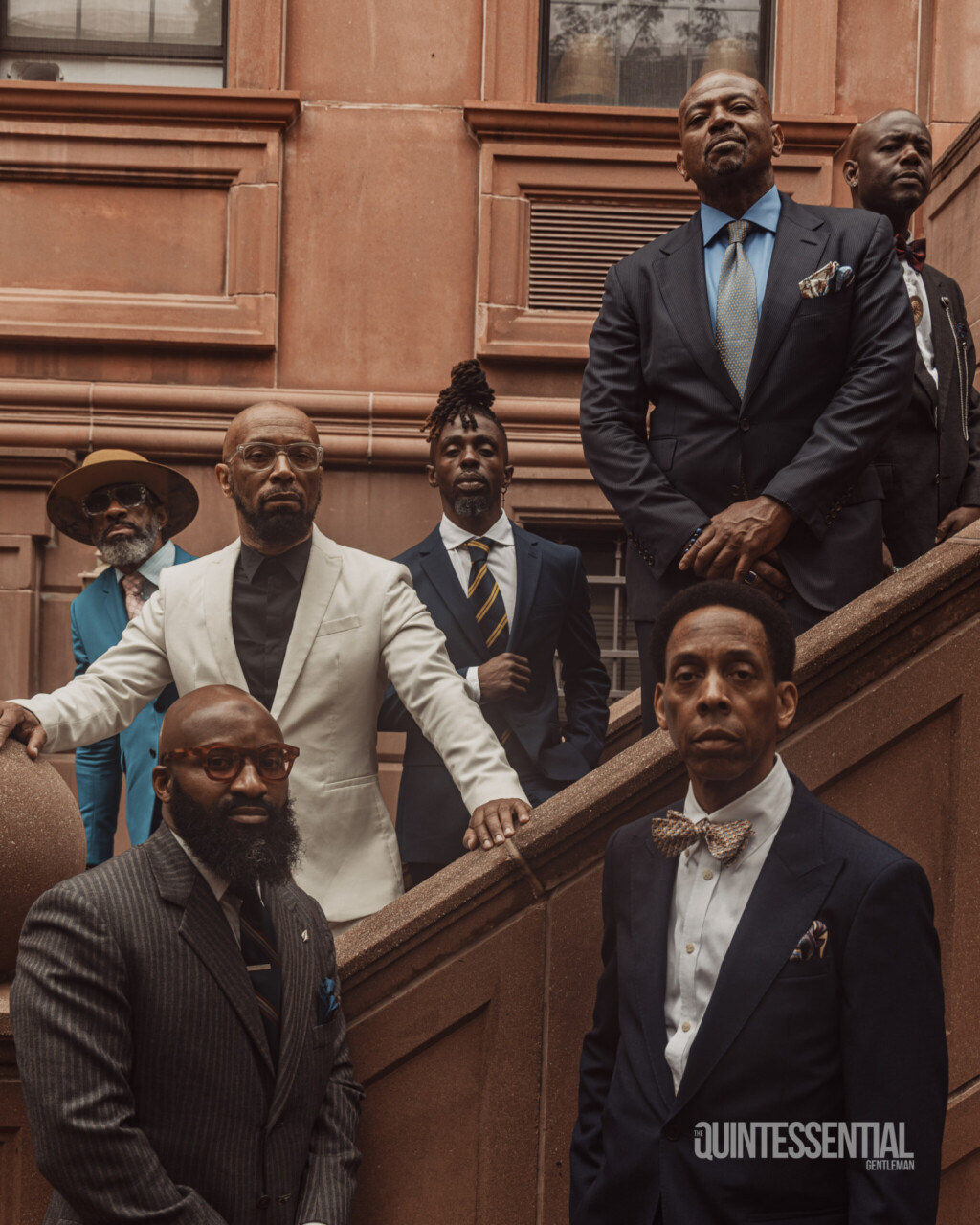
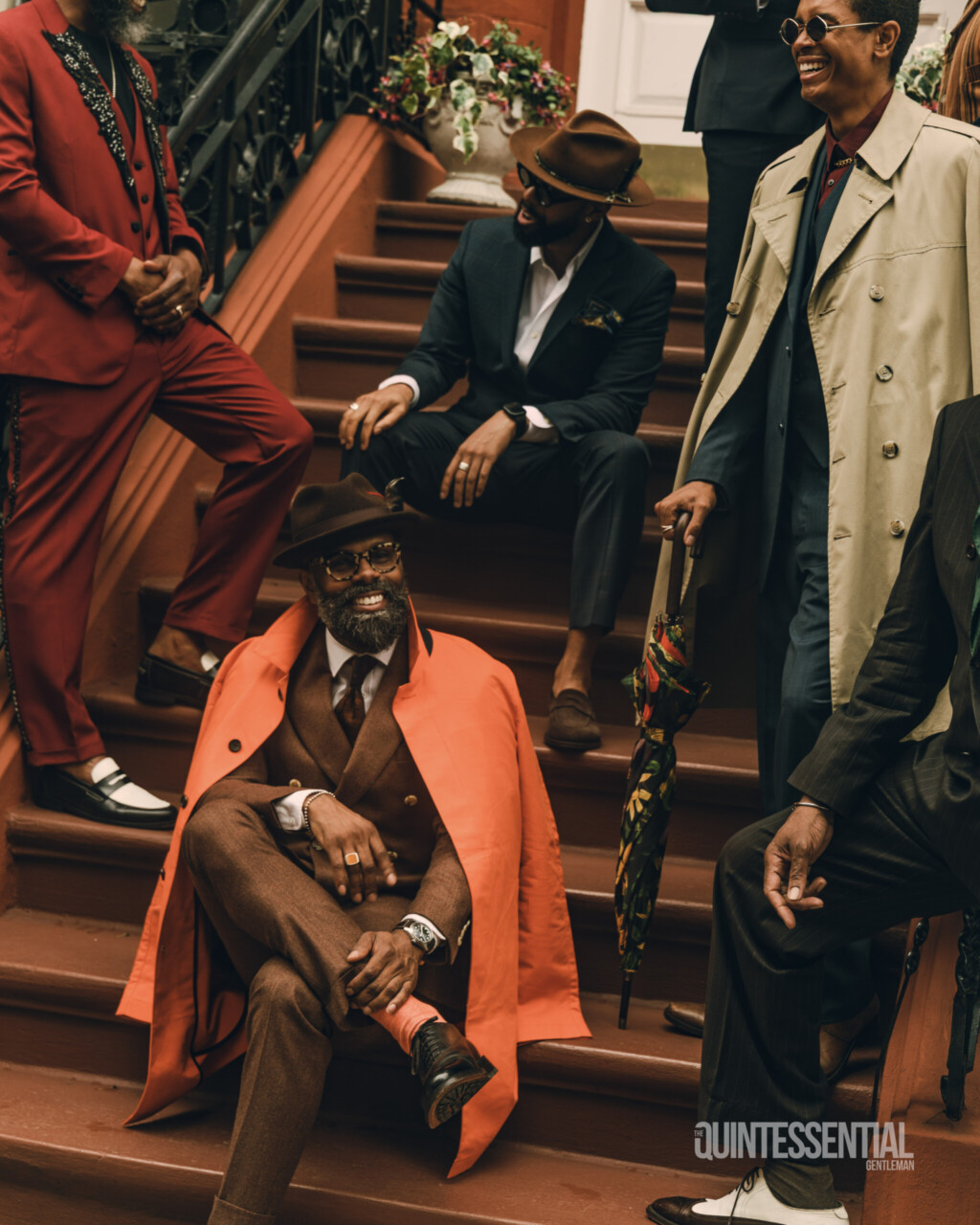
This cultural assembly was an act of resistance and affirmation.
Fashion has always been an important form of self-expression for Black men. From the Harlem Renaissance to the modern-day dandy, Black men have used style to assert their identities, challenge stereotypes, and claim the space that society has often denied them. And this shoot was a visual representation of that powerful tradition.
You Will Respect Me
Black Dandyism isn’t just about fashion; it’s about living with dignity in a world that often tries to strip that dignity away.
For centuries, Black men have faced systemic racism, discrimination, and violence. Whether in the criminal justice system, healthcare, or education, we are disproportionately affected by policies and practices that undermine our humanity.
Yet, despite these challenges, we continue to show up—unapologetically, confidently, and with style.
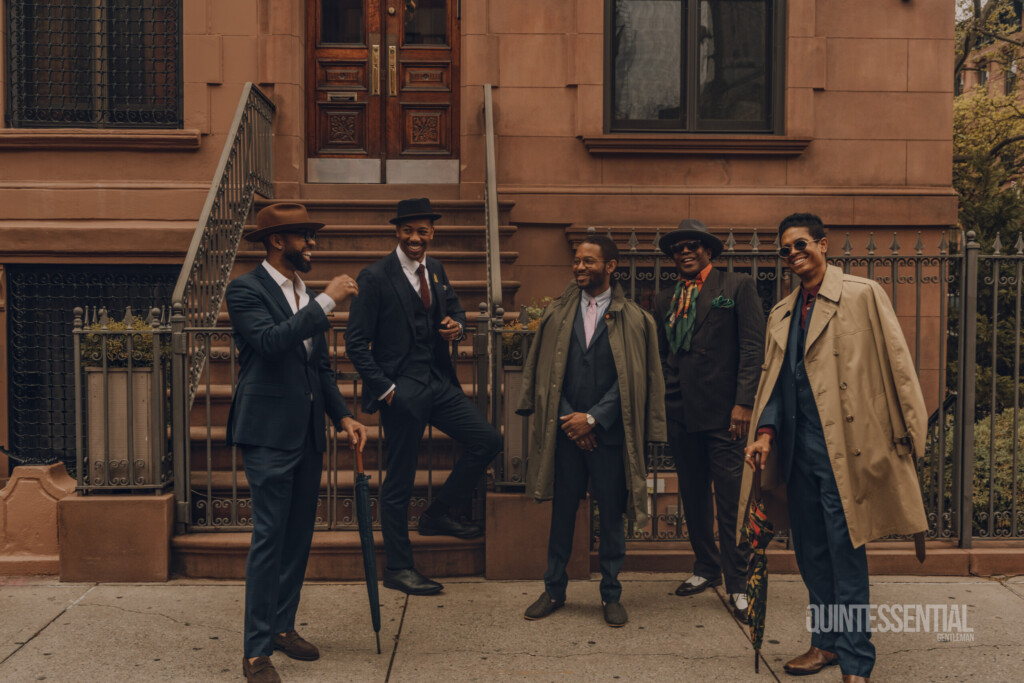
When a Black man steps out in a tailored suit, he’s not just dressing for a special occasion, he’s making a statement: I am worthy of respect. I am not defined by society’s expectations of me. I am more than the stereotypes you place on me.
Harlem has always been about creative expression, but it’s also been a place where we’re forced to fight for our space. We’re seen, but not always respected. We have a right to claim respect, just like anyone else.
It’s a sad reality that Black men are often seen as threats or as less-than-human in many spaces, but that doesn’t stop us from continuing to fight for our rightful place. We are seen but not always respected. But when we show up, dressed in our finest, we make it clear that we will be respected.
“We’re reclaiming our narrative and dandy,” J. Monroe said. “We’re not just here to exist—we’re here to thrive, and we’re going to do it on our own terms.”
You Will Recognize My Humanity
Despite the undeniable contributions that Black people have made to American society, our humanity is often questioned. From the erasure of Black history in schools to the violence perpetrated against Black bodies, it’s clear that the country has yet to fully recognize the value of Black lives.
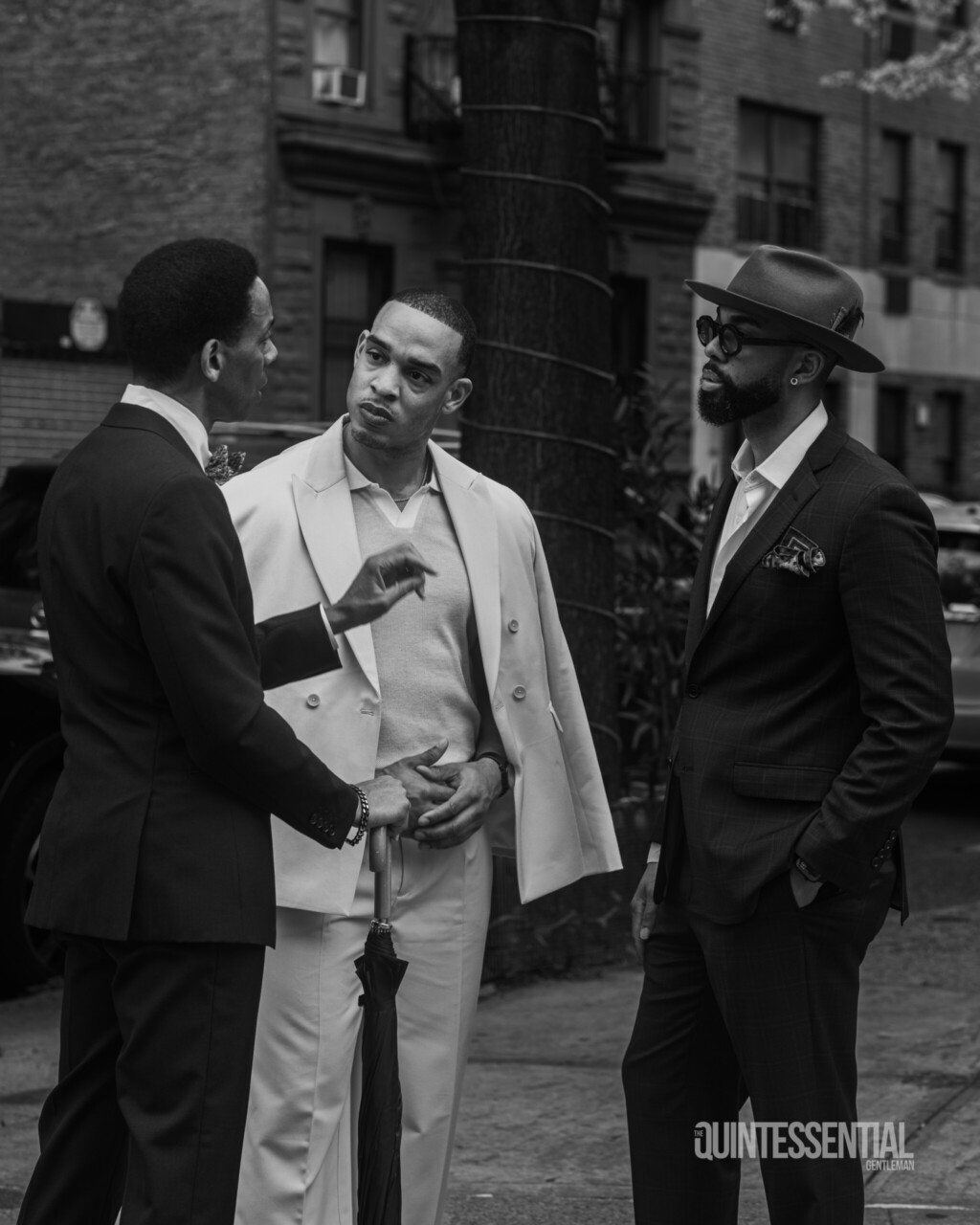
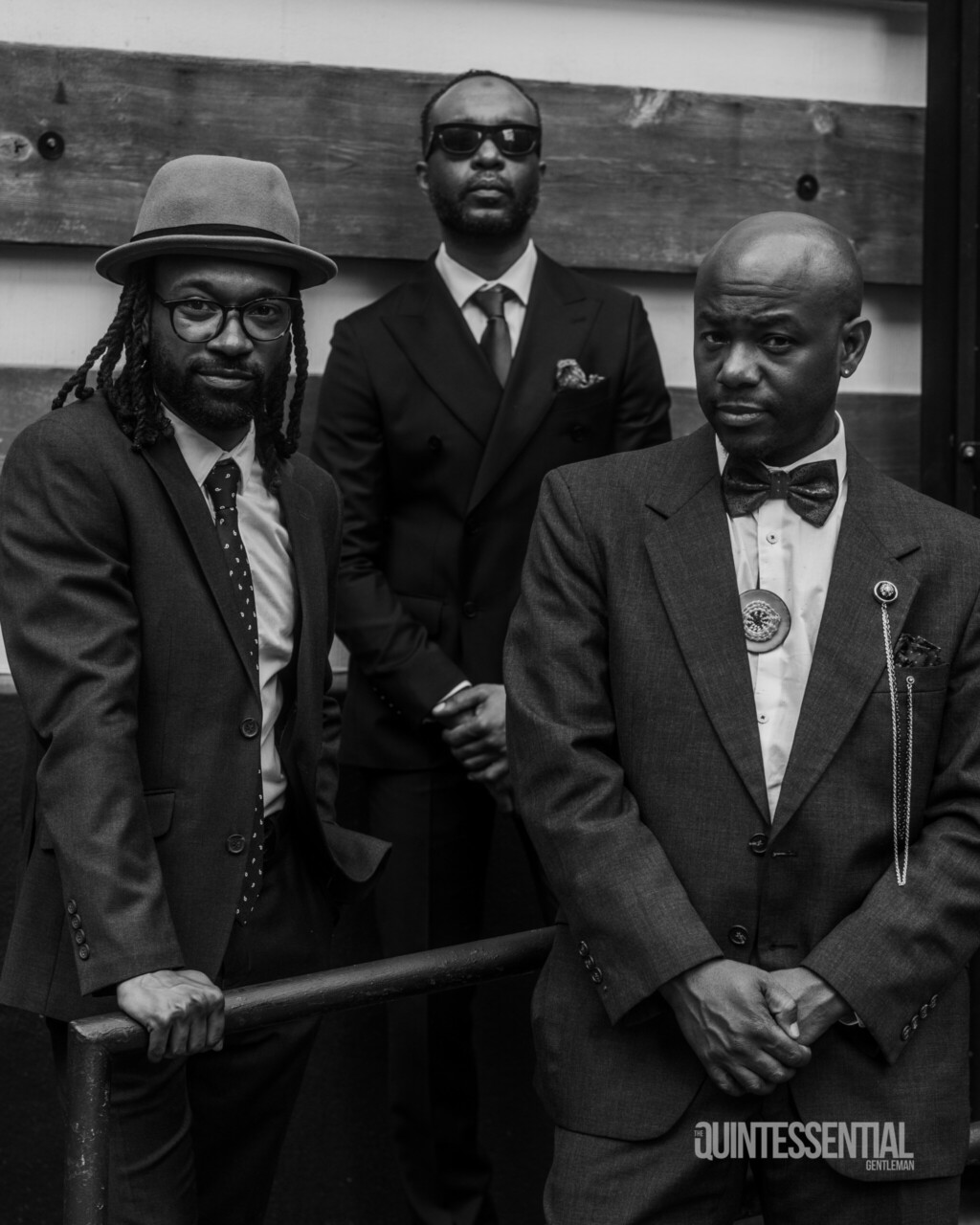
This doesn’t just apply to the way Black men are treated in the streets, it also extends to the political and economic systems that have historically oppressed Black people.
Black men have been marginalized in nearly every sector of life, from education to employment to the justice system. Yet, despite these systemic obstacles, Black men continue to rise, to lead, to create, and to push for change. We are still fighting for recognition, equality, and justice.
We cannot ignore the politics of Black identity. When we walk into a room, we are claiming our space and our humanity. It’s about knowing that we matter, no matter what.
The fight for Black lives, dignity, and recognition continues. From the civil rights movement to the Black Lives Matter movement, Black men are fighting to ensure that our lives are valued just as much as anyone else’s.
This cultural assembly, this cover, and this movement are just one way that we’re saying, “You will see us. You will respect us. And you will recognize our humanity.”
“Harlem isn’t just a place, it’s a statement. It’s where Black culture thrives, and it’s where we rise above the systems that try to keep us down,” J. Monroe said.
The Black men who gathered in Harlem that day, dressed in their finest and captured through J. Monroe’s lens, didn’t just create an iconic magazine cover; they sent a message to the world: “We are here. We are proud. We will not be ignored.”
As the Met Gala embraces the theme of Black Dandyism this year, it’s clear that Black men aren’t just part of fashion—they are fashion. They are culture. They are humanity. As long as we continue to show up for ourselves, claim our space, and assert our dignity, that message will continue to resonate.
This is Black Dandyism—an act of resistance, a declaration of identity, and a celebration of humanity.
Participants of the cultural assembly: Charlie Semanas, James Edward Becton III, David Pharel, Afriyie Amankwaa, Marcus Murphy, Todd Jessamy, Jonathan McCrory, Dev, Mickange Lucien, James Palmer III, Denez Moss, Michael Heron, D’Angelo Virgo, Brian St John, Terrence Eldridge, Justin Price, Serge Fils-Aimé, Khalil Kavon, Jonathan Matthew Williams, Isaiah Grant, Gyasi Headen, Kells Barnett, Kevin Ferguson, William Roberts-Foster, Jeremias Lima, Hamza Sarr, Suahd, Donovan J Snype, George Myrie, Aaron Ganaway, Robert Newman III, Tyson, Cliff, Brinton brewster, David C. Winston, Ibrahima fall, Jonathan Escoffery, DeAnda Babb, and Taliek Jeqon.
Cover Story Photographer: J. Monroe of Monroe Media
BTS Photographer: Xzavier Vozo




